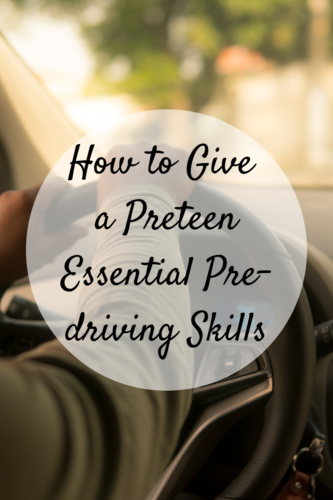
Learning to drive is an American teen’s rite of passage, a major step toward independence and adulthood — and most parents want to put it off for as long as possible. However, the sooner you start to prepare your preteen for their time behind the wheel, the more confident and capable they will be as drivers.
As soon as your child starts showing an interest in learning the processes of driving, you can put them in the driver’s seat — but that doesn’t mean you should let any 12-year-old drive on busy city streets. Here is a guide to helping your preteen learn to drive without putting them at risk.
Refresh Your Knowledge of Road Rules
Likely, you have been driving for decades now — but it has likely been years and years since you took your last driving exam, and you have probably forgotten the letter of the law. Because you do not want to pass along incorrect information to the next generation of drivers, it is probably worth your time and money to refresh your driving knowledge with continuous driver safety training. In professionally taught courses, you will not only gain access to the most current regulations impacting drivers but you will also demonstrate to your preteens that no one is too old and experienced to benefit from additional training.
Get Under the Hood
Many young people have mechanical minds that appreciate understanding how something works before they learn how to use it properly. Before you let your preteen sit behind the wheel, you might pop the hood and explore the inner workings of your car’s motor. You can review the major components that compel a car to go, such as the engine, the radiator, the battery and more. You can demonstrate the components that you regularly maintain and how to perform those maintenance tasks. If your preteen is particularly keen on this tutorial, you might have them practice refilling fluids or replacing tires.
Explain the Dashboard
The dashboard is incredibly overwhelming to new drivers, who do not know how to parse all the information available to them. You can turn the car on and allow your preteen to sit behind the wheel as you point out different gauges and explain what they mean. You should provide examples for when each gauge is important; for example, drivers should regularly check their speedometer to ensure they are traveling at a safe and legal speed, and drivers can check the odometer every so often to plan for oil changes and other types of maintenance. Using the dashboard effectively takes time and practice, but having a thorough explanation of its components can be helpful for preteens before they start driving.
Practice Driving With a Stationary Vehicle
Once your preteen is tall enough to reach the pedals and see over the dashboard at the same time, they can start running through the motions of driving. You should have them learn how to adjust their mirrors to see adequately around the vehicle. Then, you might allow them to experiment with the patterns of depressing the pedals — especially if you want them to learn how to drive a manual transmission vehicle. They might not be able to move the gear shifter until the car is in motion, but they can get a feel for sitting in the driver’s seat, paying attention to everything around them and working the controls with their feet.
Use Driving Simulation Games
Humans learn best through play, but a real car is much too expensive and dangerous to play with. Instead, you might invest in a simulation system that allows your preteen to practice paying attention to all the information drivers must track while obeying the rules of the road. Most driving games involve racing or performing illegal activities in moving vehicles; you should try to find sim games that are more realistic to the real driving experience, like City Car Driving or Euro Truck Simulator.
Get Moving in Empty Spaces
Legally, no one can get behind the wheel of a moving vehicle until they qualify for a learner’s permit. However, most authorities will turn a blind eye to a teenager practicing under direct supervision of a parent in an area where other vehicles are unlikely to be. For example, if you have a large property, you might allow your preteen to drive up and down the driveway. If abandoned parking lots also make excellent spaces for preteen driving practice, as do less-traveled forest roads. Your preteen should never be moving fast, and you should always intervene if they get overwhelmed or overambitious.
More practice always results in better outcomes. Though you do not want to toss your preteen the keys to your favorite vehicle, you can introduce them to core concepts of driving early on, so they feel more prepared to drive safely and effectively when they come of age.





